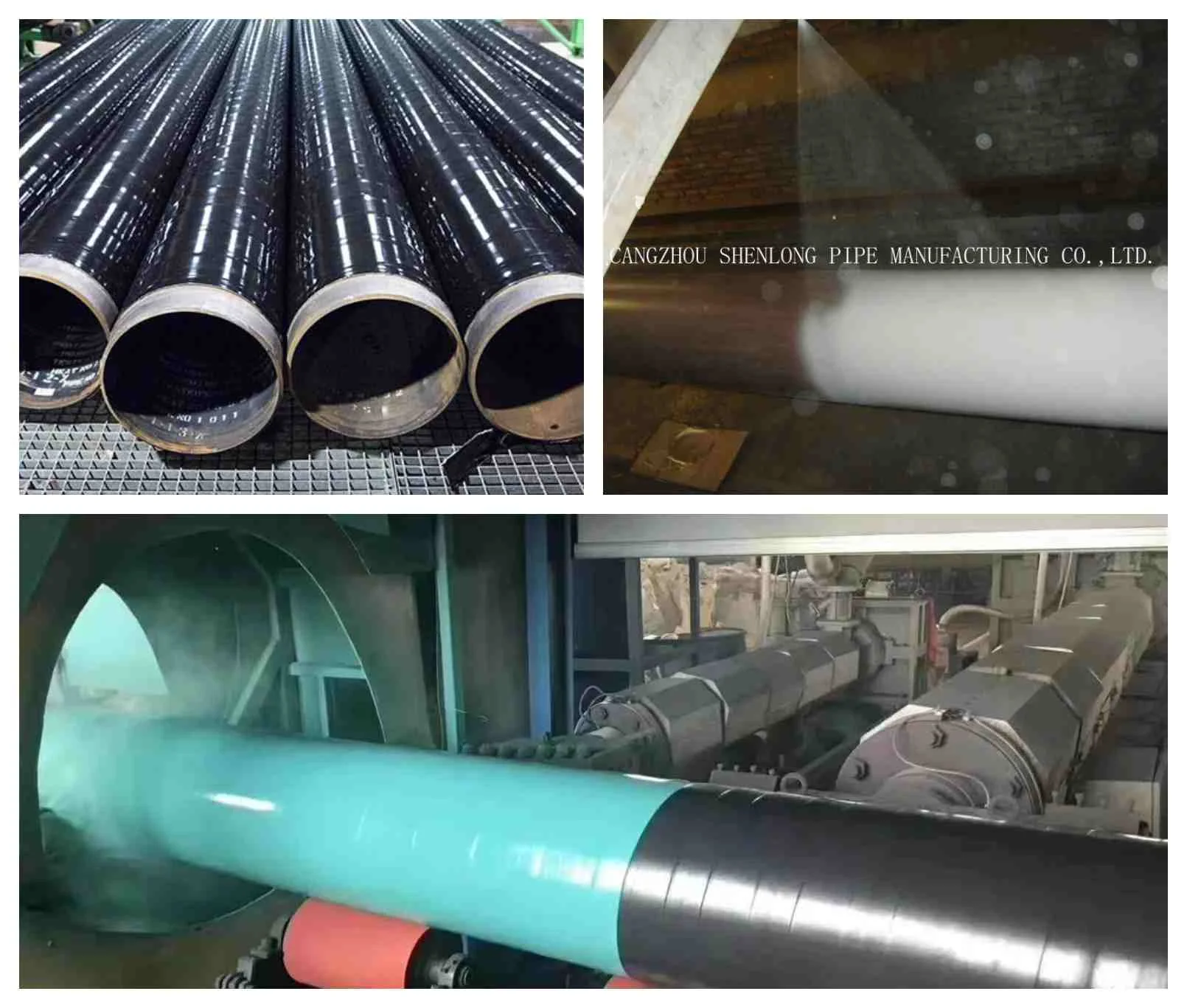Surface treatment of steel pipe
Straight seam steel pipe is a common type of steel pipe, which is widely used in construction, machinery, chemical industry, petroleum, electric power and other fields. In order to ensure the quality and service life of straight seam steel pipes, surface treatment is a very important part. This article will focus on the surface treatment of straight seam steel pipes in detail.

The surface treatment of straight seam steel pipe is mainly to prevent corrosion, improve wear resistance and aesthetics. Specifically, the purpose of surface treatment includes the following aspects:
1. Anti-corrosion: Straight seam steel pipes are easily corroded by chemical substances such as oxidation, acid and alkali during use, resulting in corrosion. Surface treatment can form a protective film on the surface of the steel pipe to prevent the steel pipe from being corroded.
2. Improve wear resistance: Straight seam steel pipes are prone to friction and wear during transportation and use, which affects their service life. Surface treatment can increase the hardness and wear resistance of steel pipes and improve their service life.
3. Aesthetics: The surface treatment of the straight seam steel pipe can make the appearance more beautiful and increase the added value of the product.
There are many surface treatment methods for straight seam steel pipes, the common ones include the following:
1. Pickling: Pickling is a common surface treatment method, which can remove scale and rust on the surface of steel pipes to prevent corrosion. Pickling is generally carried out with strong acids such as hydrochloric acid or sulfuric acid. It should be noted that neutralization treatment must be carried out after pickling to prevent the pickling solution from polluting the environment.
2. Sand polishing: Sand polishing is a mechanical surface treatment method that can remove burrs and scales on the surface of steel pipes, thereby improving the aesthetics and wear resistance of steel pipes. Sand polishing can be carried out with grinding wheels of different grain sizes. Coarse grinding wheels can remove thicker scales and burrs, and fine grinding wheels can remove fine scales and burrs.
3. Spraying: Spraying is a common surface treatment method, which can form a protective film on the surface of the steel pipe to prevent the steel pipe from being corroded. Spraying can be done with different paints such as epoxy, polyurethane, etc.
4. Galvanizing: Galvanizing is a common surface treatment method, which can form a zinc layer on the surface of the steel pipe to prevent the steel pipe from being corroded. Galvanizing can be carried out by two methods of hot-dip galvanizing and electro-galvanizing, and the anti-corrosion performance of hot-dip galvanizing is better.
5. Oiling: Oiling is a simple surface treatment method, which can form a protective film on the surface of the steel pipe to prevent the steel pipe from being corroded. Oiling can be carried out with different oils, such as mineral oil, synthetic oil, etc.
When carrying out the surface treatment of straight-seam steel pipes, the following aspects need to be paid attention to:
1. Cleaning before surface treatment: Before surface treatment, the surface of the steel pipe needs to be cleaned to remove dust, oil, and other impurities on the surface to ensure the effect of surface treatment.
2. Neutralization treatment after surface treatment: After surface treatment such as pickling, neutralization treatment is required to prevent the pickling solution from polluting the environment.
3. Pay attention to safety in surface treatment: When performing surface treatment, you need to pay attention to safety, such as wearing protective glasses and gloves, to prevent chemical substances from harming the human body.
4. The scope of application of different surface treatment methods is different: different surface treatment methods are suitable for different environments and requirements, and the appropriate surface treatment method needs to be selected according to the specific situation.
The surface treatment of straight-seam steel pipe is an important link to ensure the quality and service life of the steel pipe. The purpose of surface treatment includes preventing corrosion, and improving wear resistance and aesthetics. Common surface treatment methods include pickling, sand polishing, spraying, galvanizing, and oiling, etc. When performing surface treatment, it is necessary to pay attention to cleaning, neutralization, safety, and selection of suitable surface treatment methods.
The Importance of Steel Pipe Testing and Inspection
The Importance of Proper Steel Pipe Maintenance
Choosing the Right Steel Pipe for Your Project: Tips and Considerations
The Advantages of Steel Pipes in Construction: Durability, Strength, and Versatility






